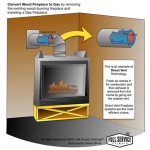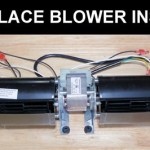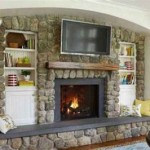Wood Fireplace to Gas Conversion: A Comprehensive Guide
Converting a wood-burning fireplace to gas offers numerous advantages, from enhanced convenience and efficiency to reduced maintenance and environmental impact. The process itself involves replacing the existing firebox with a gas insert or burner, making the transition relatively straightforward while delivering significant benefits. This comprehensive guide delves into the key considerations, steps involved, and potential advantages of converting your wood fireplace to gas.
Key Considerations for Wood Fireplace to Gas Conversion
Before embarking on a fireplace conversion, several factors warrant careful consideration to ensure a successful and satisfying outcome.
Existing Fireplace Structure
The existing fireplace structure plays a crucial role in determining the feasibility and complexities of the conversion. Structural integrity, dimensions, and the presence of a chimney are paramount for a smooth transition.
Gas Line Availability
A readily accessible gas line is essential for a gas fireplace conversion. If a gas line is not already in place, it will need to be installed, potentially requiring significant additional costs and effort.
Fireplace Aesthetics
While functionality is key, the aesthetic appeal of the fireplace should also be factored into the conversion decision. Gas inserts and burners come in various styles and finishes to complement existing decor and preferences.
Local Regulations and Permits
Local building codes and permits often govern fireplace installations and conversions. Thoroughly understanding and complying with all relevant regulations is crucial to avoid potential issues and ensure the project's legality.
Steps Involved in Wood Fireplace to Gas Conversion
The conversion process typically involves a series of steps, each contributing to a successful and functional gas fireplace.
1. Professional Assessment
A professional assessment by a qualified fireplace installer or contractor is the first step. They will evaluate the existing fireplace structure, chimney conditions, and gas line availability to determine the feasibility and complexity of the conversion.
2. Gas Line Installation (If Required)
If a gas line is not already available, a certified gas fitter will install a new gas line according to local regulations. This may involve running new piping from the main gas line to the fireplace location.
3. Firebox Removal and Gas Insert/Burner Installation
The existing wood-burning firebox is removed, and the chosen gas insert or burner is installed. Gas inserts are self-contained units that replace the entire firebox, while gas burners fit inside the existing fireplace structure.
4. Gas Line Connection and Testing
The gas line is connected to the gas insert or burner, and safety checks are conducted to ensure proper operation and leak-free performance.
5. Chimney Inspection and Cleaning
The chimney is inspected for cracks, blockages, or other issues. Cleaning and repairs are necessary to ensure proper ventilation and prevent potential hazards associated with gas combustion.
6. Finishing Touches
The installation is completed by adding finishing touches such as a decorative hearth, fire screen, and any other desired enhancements to complement the new gas fireplace.
Advantages of Converting a Wood Fireplace to Gas
Converting a wood fireplace to gas offers numerous advantages that enhance convenience, efficiency, and overall appeal.
Convenience and Ease of Use
Gas fireplaces eliminate the need for chopping, storing, and transporting wood, offering unparalleled convenience. They are also easier to ignite, offering instant warmth and ambiance with a simple switch flip.
Increased Efficiency and Reduced Emissions
Gas fireplaces are considerably more efficient than wood-burning fireplaces, converting a greater percentage of fuel energy into heat. This translates to lower energy consumption and reduced greenhouse gas emissions.
Reduced Maintenance and Cleaning
Gas fireplaces require minimal maintenance compared to wood-burning fireplaces. No ash cleanup, soot removal, or regular chimney inspections are necessary, resulting in significant time and effort savings.
Enhanced Safety
Gas fireplaces typically have built-in safety features such as thermostats and automatic shut-off mechanisms, mitigating the risk of accidental fires or overheating. This enhances safety and peace of mind.
Converting your wood fireplace to gas is a decision that offers significant benefits, enhancing convenience, efficiency, and safety. By carefully considering the key factors, understanding the installation process, and seeking professional assistance, you can enjoy the numerous advantages of a modern and efficient gas fireplace.
Converting A Wood Burning Fireplace Into Gas Heat Glo
Can I Convert My Wood Burning Fireplace To Gas Woodlanddirect Com

Wood Fireplaces Gas Conversion That Counts

Convert From Wood To Gas With A Insert The Kernel Burner

Wood To Gas Fireplace Conversion In Wisconsin Free Quote Badgerland Waesha

Wood Burner Conversion New Jersey Fireplaces Kjb
Can I Convert My Wood Burning Fireplace To Gas Woodlanddirect Com

Converting Wood Fireplace To Gas Valparaiso In Northwest Chimney

Want To Convert Gas Wood Fireplace Full Service Chimney

Should You Convert Your Cabin Fireplace From Wood To Gas
Related Posts








